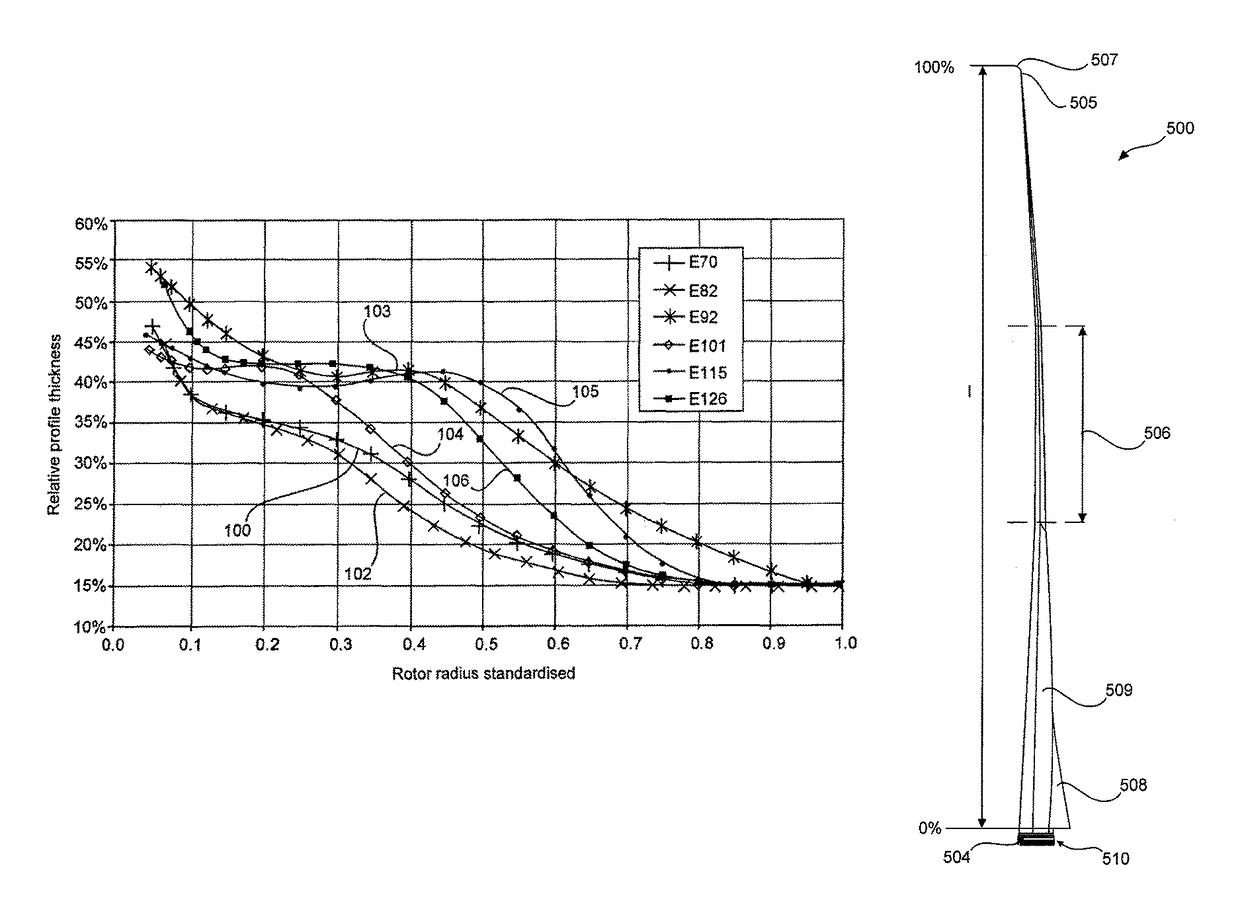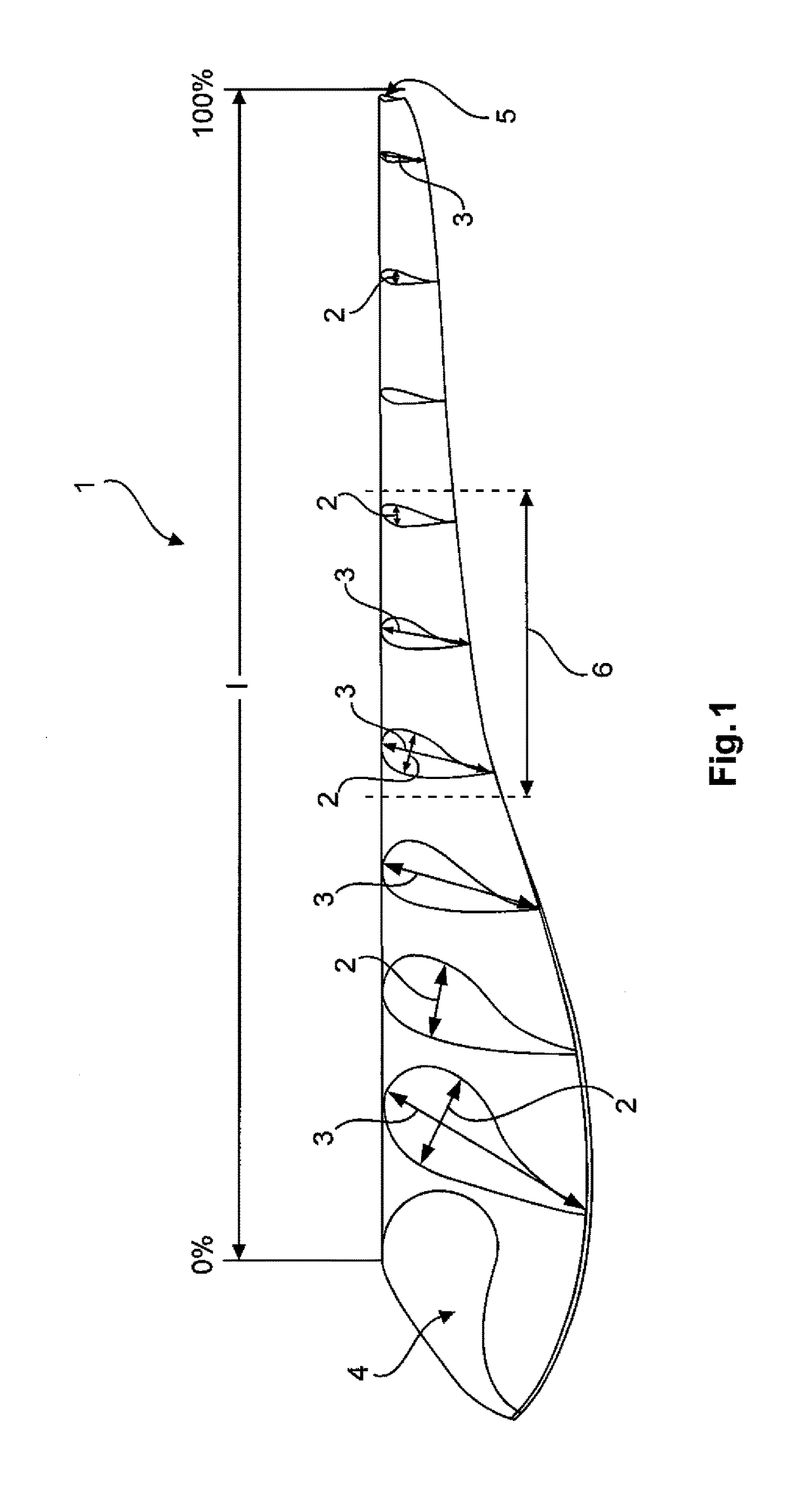Rotor blade for a wind power plant
a technology for wind power plants and rotor blades, which is applied in the direction of sustainable buildings, machines/engines, mechanical equipment, etc., can solve the problems of large weight of rotor blades, complicated and difficult production and transportation to respective erection locations, and the implementation of rotor blades, so as to reduce the load on the machine structure and the pylon, the maximum level of stiffness is achieved, and the weight is low
- Summary
- Abstract
- Description
- Claims
- Application Information
AI Technical Summary
Benefits of technology
Problems solved by technology
Method used
Image
Examples
Embodiment Construction
[0028]FIG. 1 shows a distribution of various profile geometries of a rotor blade 1 of an embodiment. Profile thicknesses 2 and profile depths 3 are shown in portion-wise manner in the rotor blade 1. The profile depths 3 measure the depth of the rotor blade from a curved edge (foreground) to a substantially flat edge (background). The profile thickness 2 measures the thicknesss of the rotor blade in vertical planes of the page. At one end the rotor blade 1 has the rotor blade root 4 and at the end remote therefrom it has a connecting region 5 for the attachment of a rotor blade tip. At the rotor blade root 4 the rotor blade has a large profile depth 3. In the connecting region 5 in contrast the profile depth 3 is very much smaller. The profile depth decreases markedly from the rotor blade root 4 which can also be referred to as the profile root 4, to a central region 6. A separation location (not shown here) can be provided in the central region 6. The profile depth 3 is almost const...
PUM
 Login to View More
Login to View More Abstract
Description
Claims
Application Information
 Login to View More
Login to View More - R&D
- Intellectual Property
- Life Sciences
- Materials
- Tech Scout
- Unparalleled Data Quality
- Higher Quality Content
- 60% Fewer Hallucinations
Browse by: Latest US Patents, China's latest patents, Technical Efficacy Thesaurus, Application Domain, Technology Topic, Popular Technical Reports.
© 2025 PatSnap. All rights reserved.Legal|Privacy policy|Modern Slavery Act Transparency Statement|Sitemap|About US| Contact US: help@patsnap.com



